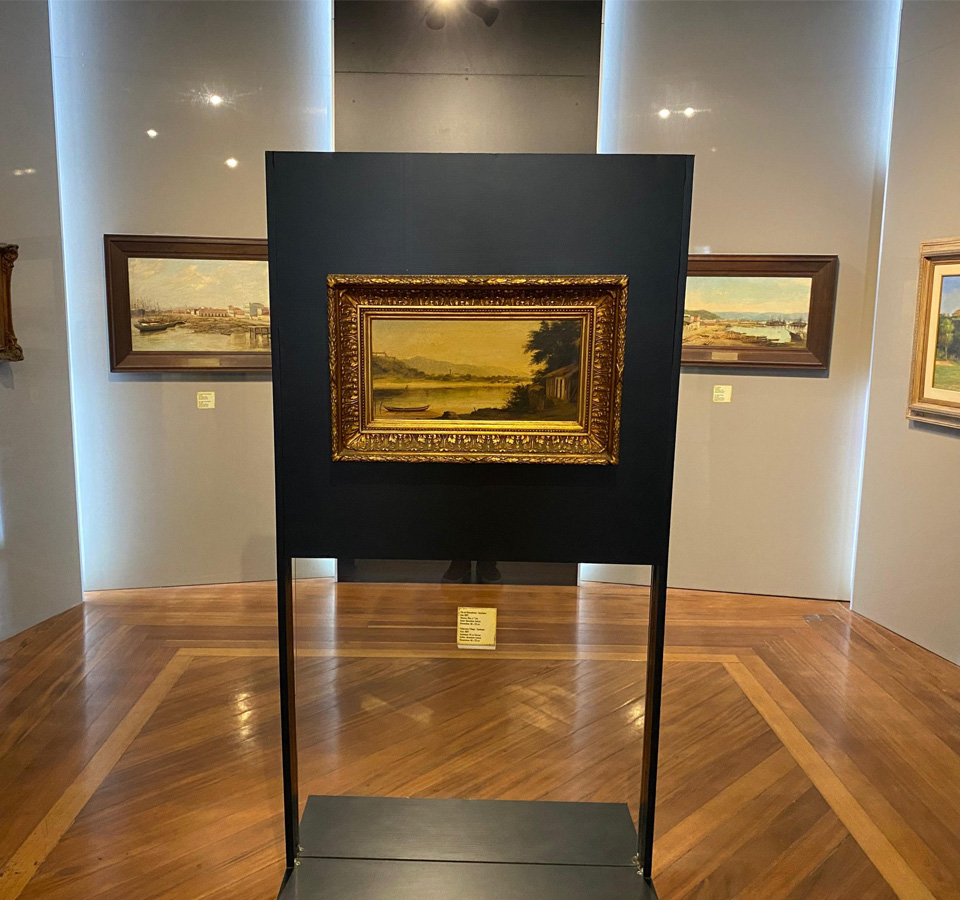Benedicto
Calixto
Considered one of the greatest representatives of early 20th century Brazilian painting, Benedicto Calixto de Jesus was born on October 14, 1853, in the city of Itanhaém, on the south coast of São Paulo. Self-taught, he began his first sketches as a child, at the age of 8. At the age of 18, he moved to Santos, where he had a difficult start in life, even painting walls and advertising signs to make ends meet. Later, Calixto began painting landscapes on the ceilings and walls of the mansions of the city's prosperous merchants.

At the invitation of his older brother, the artist went to live in Brotas, in the interior of São Paulo, which at the time was prosperous due to its coffee production. There, he worked as a volunteer at the local church and began painting canvases. In 1877, he went to Itanhaém to marry his second cousin, Antônia Leopoldina de Araújo. Back in Brotas, he continued to paint landscapes of local farms and portraits of coffee barons. In 1881, he had his first daughter, Fantina, and at the end of the same year, the family decided to move to Santos. At the time, Calixto had his first exhibition at the Correio Paulistano newspaper salon in São Paulo, with great critical success.
In 1882, luck knocked on his door with an invitation to do carving and painting work on the inside of the Guarany Theatre in Santos, which earned him honors and a scholarship to study in Paris, where he stayed for almost a year, attending the studio of Master Rafaelli and the Julien Academy. In Europe, he was able to hold several successful exhibitions and, back in Santos, he brought photographic equipment with him and became a pioneer in Brazil in the art of painting from photographs.


In 1886 and 1887, respectively, his children Sizenando and Pedrina were born. In 1890, he moved to São Paulo. Seven years later, he returned to the coast and moved into a house he had built himself in São Vicente. From then on, he never stopped working. He produced important works for various museums, including Ipiranga in São Paulo, and for countless churches throughout the country. He also collaborated with associations, foundations and institutions, such as the Bolsa Oficial do Café, in Santos, where one of his main works, “A Fundação de Santos”, occupies an entire wall of the main hall, as well as two others that also have the city of Santos as their theme and the stained glass window on the ceiling with allegories for the bandeirantes.
Throughout his career, Benedicto Calixto produced approximately 1,700 works, of which 712 are catalogued. He painted seascapes, portraits, rural and urban landscapes and religious works. The latter earned him the honor of Saint Sylvester, awarded by Pope Pius XI in 1924.
As well as painting, he was a historian, writer and photographer. He died of a heart attack on May 31, 1927, in São Paulo, at his son Sizenando's house, where he had gone to buy material to finish two canvases for Santos Cathedral. He was buried in Paquetá Cemetery, in a perpetual tomb donated by Santos City Hall. His last two works are entitled “Noé” and “Melchisedech”.
Get to know Calixto
The Foundation has an agreement with Santos City Hall, through which students from the public school system visit the museum and learn a little about Benedicto Calixto's work and history. During their stay at the Pinacoteca, the group also visits the exhibitions on display and takes part in art workshops and fun activities.
The “Meet Calixto” project is concerned with forming a new public capable of appreciating the role of art and artists in society, as well as recognizing the democratic nature of museums.
Primary school students from the state's public schools are also part of this program, thanks to an agreement signed with the Foundation for the Development of Education (FDE).
Other institutions interested in taking part in the Pinacoteca's educational program can schedule visits in advance.

Learn more about Calixto
The interactive book Calixto Digital, developed by Bitcom, covers several interesting subjects about Benedicto Calixto and can be downloaded in iBook version (exclusively for Apple devices) or in PDF where you can view all the content, but without the interactivity features.
iBook Download PDF Download
